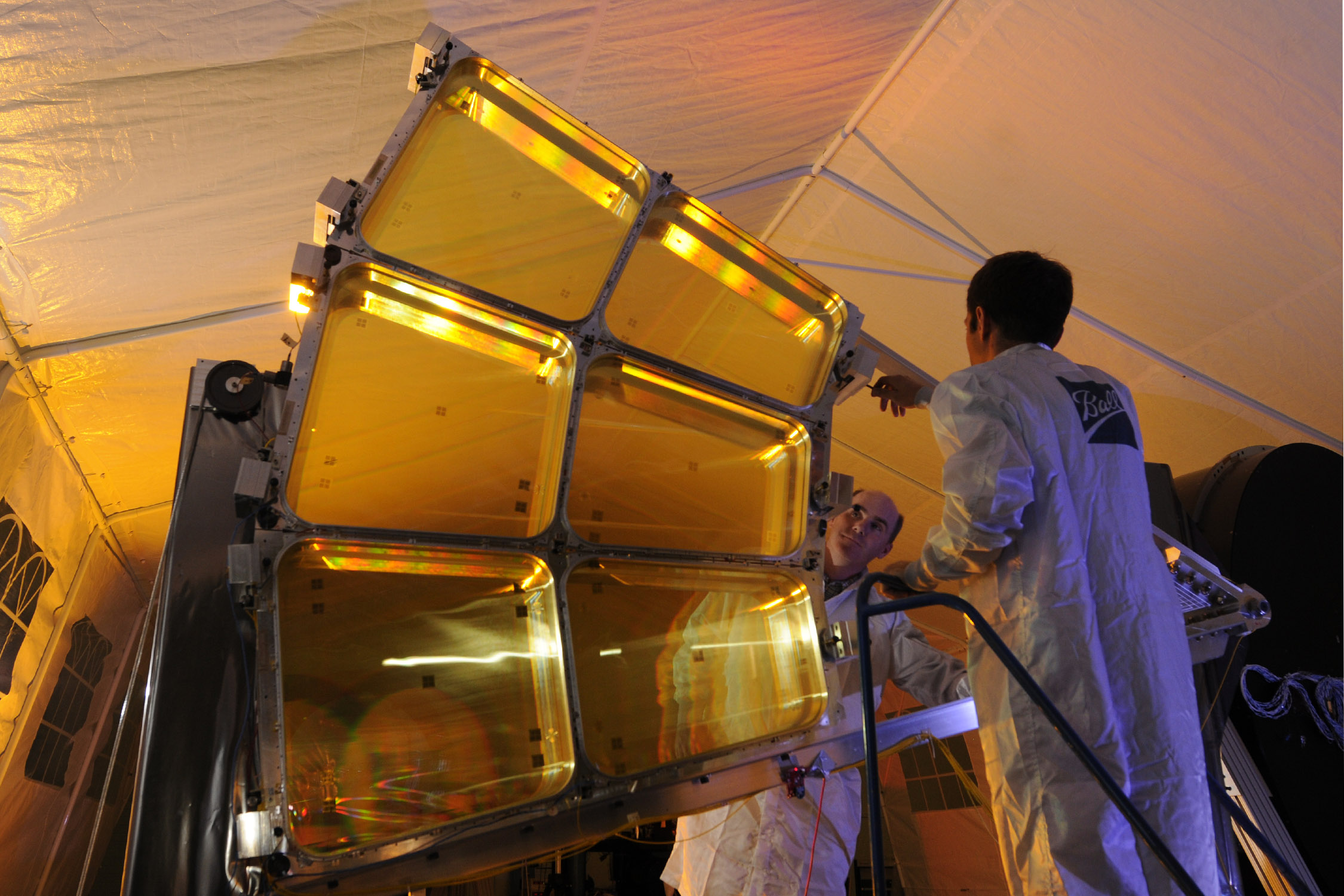US Military Developing Foldable Space Telescope (Video, Images)
The United States military's advanced research arm is working on a foldable space telescope that could image Earth in high resolution at a relatively low cost.
The Defense Advanced Research Projects Agency (DARPA) says the telescope design — known as the Membrane Optical Imager for Real-Time Exploitation, or MOIRE — would be of great use in geosynchronous Earth orbit, the spot 22,000 miles (35,000 kilometers) up where most telecommunications satellites reside.
"Membrane optics could enable us to fit much larger, higher-resolution telescopes in smaller and lighter packages," Lt. Col. Larry Gunn, MOIRE program manager, said in a statement. [Giant Space Telescopes of the Future (Infographic)]
"In that respect, we’re ‘breaking the glass ceiling’ that traditional materials impose on optics design," Gunn added. "We’re hoping our research could also help greatly reduce overall costs and enable more timely deployment using smaller, less expensive launch vehicles."
MOIRE is now in Phase 2 of development since work began in 2010. When this phase is completed, a 16-foot (5 meters) prototype of the telescope's mirror should be completed for ground testing. No space missions have been set for MOIRE yet, DARPA officials said.
There are both advantages and disadvantages to the MOIRE design. The membrane is not as efficient as the usual glass, but it is lighter — which allows prime contractor Ball Aerospace & Technologies Corp. to make larger lenses to increase the telescope's efficiency. DARPA estimates that a membrane system should weigh 86 percent less than a more traditional system of the same resolution and mass.
Most telescopes either reflect light (using mirrors) or refract it (using lenses), but MOIRE's behaves differently. Each membrane will instead diffract light using a piece of equipment known as a Fresnel lens.
Breaking space news, the latest updates on rocket launches, skywatching events and more!
"It is etched with circular concentric grooves like microscopically thin tree rings, with the grooves hundreds of microns across at the center down to only 4 microns at the outside edge," DARPA officials said in a statement. "The diffractive pattern focuses light on a sensor that the satellite translates into an image."
If the design ever reaches orbit, DARPA envisions the membrane stretching to 66 feet (20 meters) in diameter — about eight times the diameter of the Hubble Space Telescope and more than three times bigger than the mirror for NASA's huge James Webb Space Telescope, which is scheduled to launch in 2018.
The membranes would ride to space as "petals" packed into a tight package about 20 feet (6 m) wide, small enough to fit on a rocket. These petals would then unfurl in orbit, and provide an estimated resolution of 3.3 feet (1 m).
Follow Elizabeth Howell @howellspace, or Space.com @Spacedotcom. We're also on Facebook and Google+. Originally published on Space.com.

Elizabeth Howell (she/her), Ph.D., was a staff writer in the spaceflight channel between 2022 and 2024 specializing in Canadian space news. She was contributing writer for Space.com for 10 years from 2012 to 2024. Elizabeth's reporting includes multiple exclusives with the White House, leading world coverage about a lost-and-found space tomato on the International Space Station, witnessing five human spaceflight launches on two continents, flying parabolic, working inside a spacesuit, and participating in a simulated Mars mission. Her latest book, "Why Am I Taller?" (ECW Press, 2022) is co-written with astronaut Dave Williams.


